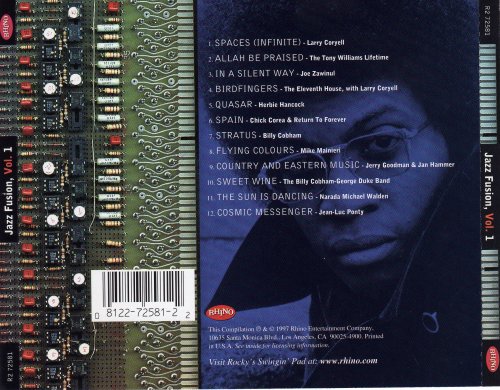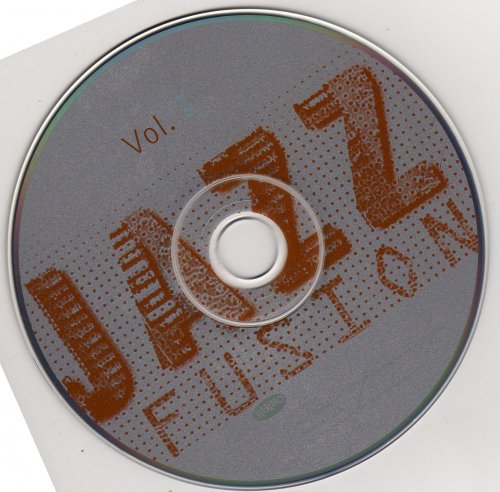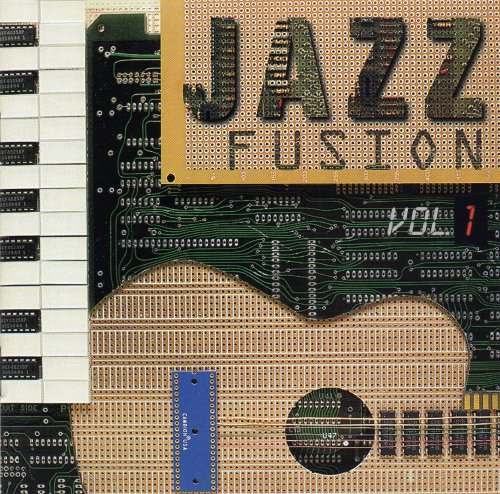
VA - Jazz Fusion Vol. 1 (1991)
BAND/ARTIST: VA
- Title: Jazz Fusion Vol. 1
- Year Of Release: 1991
- Label: Rhino Records
- Genre: Jazz Fusion
- Quality: FLAC (tracks+.cue,log,scans) / 320 kbps
- Total Time: 01:17:30
- Total Size: 489 / 170 MB
- WebSite: Album Preview
Tracklist:
1 Larry Coryell– Spaces (Infinite)
2 The Tony Williams Lifetime– Allah Be Praised
3 Joe Zawinul– In A Silent Way
4 The Eleventh House With Larry Coryell– Birdfingers
5 Herbie Hancock– Quasar
6 Chick Corea & Return To Forever– Spain
7 Billy Cobham– Stratus
8 Mike Mainieri– Flying Colours
9 Jerry Goodman & Jan Hammer– Country And Eastern Music
10 The Billy Cobham-George Duke Band*– Sweet Wine
11 Narada Michael Walden– The Sun Is Dancing
12 Jean-Luc Ponty– Cosmic Messenger


1 Larry Coryell– Spaces (Infinite)
2 The Tony Williams Lifetime– Allah Be Praised
3 Joe Zawinul– In A Silent Way
4 The Eleventh House With Larry Coryell– Birdfingers
5 Herbie Hancock– Quasar
6 Chick Corea & Return To Forever– Spain
7 Billy Cobham– Stratus
8 Mike Mainieri– Flying Colours
9 Jerry Goodman & Jan Hammer– Country And Eastern Music
10 The Billy Cobham-George Duke Band*– Sweet Wine
11 Narada Michael Walden– The Sun Is Dancing
12 Jean-Luc Ponty– Cosmic Messenger
The first of two CDs covering the fusion years is mostly not in chronological order but generally predates Vol. 2; all but one selection is from 1970-78. Rather than being a "best of" collection, this is really just an overview of the style, a dozen strong selections from a variety of formerly released albums by some of the pacesetters of the music. Included is a selection apiece from Larry Coryell, Tony Williams Lifetime, Joe Zawinul ("In a Silent Way"), Coryell's Eleventh House, Herbie Hancock, Return to Forever (the original version of "Spain"), Billy Cobham, Mike Mainieri (1981's "Flying Colours"), the duo of Jerry Goodman & Jan Hammer, the Cobham-George Duke Band, Narada Michael Walden and Jean-Luc Ponty ("Cosmic Messenger"). Among the sidemen in these overlapping groups are John McLaughlin, Miroslav Vitous, Randy Brecker, Alphonse Mouzon, Joe Farrell, Flora Purim, John Scofield and the Brecker Brothers. Both sets are worth picking up as introductions to the style.
The word Fusion has been so liberally used since the late '60s that it's become almost meaningless. Fusion's original definition was best: a mixture of jazz improvisation with the power and rhythms of rock. Up until around 1967, the worlds of jazz and rock were nearly completely separate. But as rock became more creative and its musicianship improved, and as some in the jazz world became bored with hard bop and did not want to play strictly avant-garde music, the two different idioms began to trade ideas and occasionally combine forces. By the early '70s, fusion had its own separate identity as a creative jazz style (although snubbed by many purists) and such major groups as Return to Forever, Weather Report, the Mahavishnu Orchestra, and Miles Davis' various bands were playing high-quality fusion that mixed some of the best qualities of jazz and rock. Unfortunately, as it became a money-maker and as rock declined artistically from the mid-'70s on, much of what was labeled fusion was actually a combination of jazz with easy-listening pop music and lightweight R&B. The promise of fusion went unfulfilled to an extent, although it continued to exist in groups such as Tribal Tech and Chick Corea's Elektric Band.
The word Fusion has been so liberally used since the late '60s that it's become almost meaningless. Fusion's original definition was best: a mixture of jazz improvisation with the power and rhythms of rock. Up until around 1967, the worlds of jazz and rock were nearly completely separate. But as rock became more creative and its musicianship improved, and as some in the jazz world became bored with hard bop and did not want to play strictly avant-garde music, the two different idioms began to trade ideas and occasionally combine forces. By the early '70s, fusion had its own separate identity as a creative jazz style (although snubbed by many purists) and such major groups as Return to Forever, Weather Report, the Mahavishnu Orchestra, and Miles Davis' various bands were playing high-quality fusion that mixed some of the best qualities of jazz and rock. Unfortunately, as it became a money-maker and as rock declined artistically from the mid-'70s on, much of what was labeled fusion was actually a combination of jazz with easy-listening pop music and lightweight R&B. The promise of fusion went unfulfilled to an extent, although it continued to exist in groups such as Tribal Tech and Chick Corea's Elektric Band.


Jazz | FLAC / APE | Mp3 | CD-Rip
As a ISRA.CLOUD's PREMIUM member you will have the following benefits:
- Unlimited high speed downloads
- Download directly without waiting time
- Unlimited parallel downloads
- Support for download accelerators
- No advertising
- Resume broken downloads


